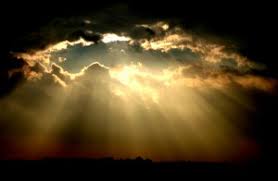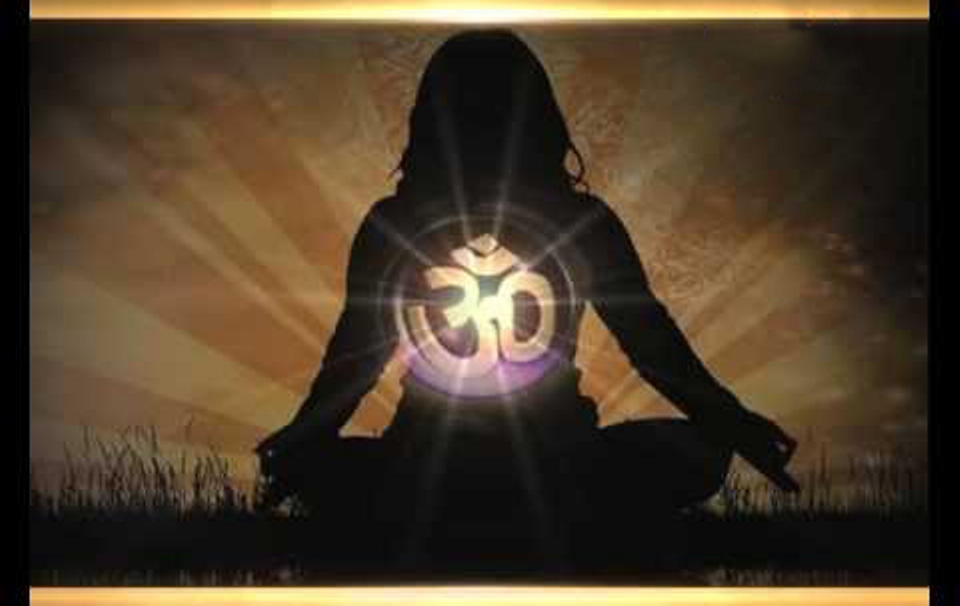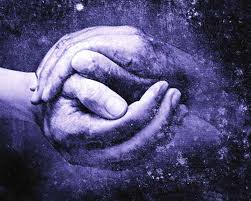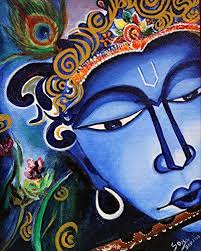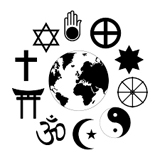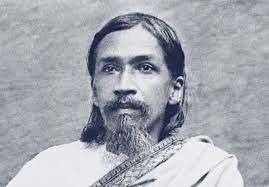Yogic insights into human psychology
Yoga and conceptions of God
Abstract
Conceptions of God are not just religious matters but a matter of everyday living. We may not call it God but simply the idea of what is the source of all things. This search for a lost reality is interwoven in man’s fabric of life. Yoga explores it in its own unique way. Yet in the process it can and does enrich all other areas of human activity such as science, art, psychology, religion and philosophy.
A question is sometimes asked if the practice of yoga necessitates a belief in God? The question is a tricky one since much depends also on how we define God. Most commonly, when we speak of God, we immediately visualise the God of religions who is much like a human being in his ways of dealing with life and creation but with abundant, supernatural powers at his disposal. He is, according to these conceptions, an aggrandised human being, endowed with much more power, a practical Omnipotence and Omniscience at the disposal of a consciousness that is very much human. His principal task seems to be to maintain the cosmic law and order, to dispense justice by rewarding the good and punishing the evil-doers, to heal the sick and help human beings when in distress. He is also supposed to grant favours and prayers of various kinds, including the satisfaction of desires, success in one’s endeavours and prevention from various kinds of afflictions and sufferings that chase mankind as a shadow.
Such a conception of an extraterrestrial God who sits above in some blue heavens, whom we must appease or fear, is the typical God of the religious instinct in man. This conception is not without its advantages. It has served as a scaffolding in man’s spiritual evolution. Perhaps there never has been a time since man awakened to his inner subjective space that he did not have some conception of a divinity. The difference however between the religious and yogic conceptions is that the God of formal religions is ‘out there’ whereas the God of Yoga is ‘in here’.
Yes, the yogic conception of God or better still divinity, — since the word God has been much distorted, — is that man is fundamentally, in his core nature, divine. The divinity he seeks is within him. In fact because it is within him he seeks it here and there, somewhere or everywhere. Even the atheist who strives for a better and more perfect world order is in search of this concealed divinity within. The man who is in the grips of dangerous addictions is suffering because he feels the loss of this inner divinity which is the source of all joy and peace and thereby seeks it through alternate routes. In fact it is never lost but veiled so to say. The thicker the veil the cruder is man’s life and his efforts to reclaim this lost paradise that he carries within him take the form of crude means that would make him feel empowered and give him momentary thrills and satiety. By various means he tries to rebuild this lost divinity but fails and falls frustrated since he is searching the right thing in the wrong place. In fact if we look closely we shall find that much of our suffering stems from the fact that we instinctively expect the world to be perfect. In our relationships too we want others to be perfect while deeply oblivious of our own imperfections.
The intuitive sense of divinity
This instinctive need for a better and better life takes various forms in man. On the one hand it creates in him an urge for constant progress towards perfection. On the other it is also the root cause of his perpetual dissatisfaction and consequent suffering! This search for improving our own condition initially takes the form of selfish endeavours. We are driven by desire and ambition without care or consideration for others. But as man evolves into a better specimen of humanity he begins to seek the betterment of others as well. It is as if our instinct of divinity is expanding to embrace and include others. We feel sympathy for our fellowmen, not just for those who are our fellows but also for those who are very different from us in their way of life and customs.
This does not end here. Our intuition for divinity extends beyond man and we feel for other creatures, for animals and even plants and rivers and our material environment. Thus we progress from our crude initial start towards a more and more refined and expanded state of self and being. As we thus progress, it becomes increasingly impossible to shut God in any narrow fixed formula of life or to imprison His vastness into any dogmatic belief systems that go by the name of religion. Creeds and cults and sects may have been necessary in our early primitive conceptions of divinity. Our egoistic self extends towards other ego-selves that share our ideology and beliefs.
Our idea of the One
But since this divinity within us is One in its infinity, we also wish to see this sense of the One expressed in every other life. But since our idea of the One is limited by our narrow conception, therefore we try to either eliminate or crush down or relegate to an inferior position all that does not conform to our own belief system, be it religious or ideological since they are two sides of the same coin, for religion like Ideology is mind-born. They both catch the shadow of something true but neither understands what this shadow is nor how to realise it in life. The only difference is that while religion approaches it through the heart and hence sees behind this shadow a personal God, ideologies approach it in a secular manner by the thought and hence see behind their seeking an impersonal and universal possibility which man must attain. But both being in ignorance end up waging wars and become the source of much evil! An ordinary man with his limited concerns is focused on his earthly needs of food and shelter and some affection and recognition. He stays within his small boundaries like the animal in his den. He becomes an aggressor only if his den and safety and the comfort-zone of personal needs are threatened and thwarted.
But human beings cannot rest content for long in this rather primitive state of an animal-like satisfaction. A time comes when they need to go beyond the boundaries of their comfort-zones and expand into other domains. This opportunity is provided through various strivings in us, of which religion and ideology are two. However there are other means too that man follows in his urge for progress, means less aggressive and perhaps more expressive of his inner divinity. These are the various sciences and arts.
Science: search for lost knowledge and power
Science is one of the ways through which man searches for some lost knowledge and power. The scientist too worships God knowingly or (more commonly) unknowingly. Only he terms this God as Nature, that vast, complex and mysterious ‘something’, an energy or force and something else which he sees as the sole governess of creation, its origin, support and end. He worships her through his own unique rituals, pleases and propitiates her in his own unique ways so that he may get some glimpse into her complex workings and some spilth of her powers. But he too misses her heart since like the religionist and the idealist he starts with some presumption of her as being some kind of a mechanical energy.
To him faith comes like a response and what he discovers in Nature is the workings of a mechanical energy and not a conscious Force. His method of cold intellectual analysis through the application of reason on data gathered through his limited senses leaves her fathomless heart unguessed and unknown. He acquires material knowledge but misses out on her other even more powerful domains. And since all is a single interconnected chain his material knowledge remains incomplete in the absence of a more comprehensive knowledge that may include other domains of existence, other Space-Time-Substance combinations.
Art and Delight
Art tries to fulfil this gap to some extent, in a limited way. Its seeking is not for the lost knowledge or power but for Delight. It strives to capture and ensnare delight through forms and rhythms. And yet it stops short of the Reality that it seeks since it is unable to go beyond its forms of music and dance and poetry and sculpture and painting to discover the formless essence of Beauty and Delight. Just as science sees in this universe fixed processes, art too limits itself to fixed forms and rhythms. Even when it tries to break free from its fixity it enters the chaotic dark end of things rather than some luminous forms that are yet to express and seek to manifest in us and through us. It too ensnares Delight within its boundaries and hence is unable to give the ultimate satisfaction.
A false opposition
It may be noted however that Truth (sought by science) and Delight sought by art are not two different realities but One. Though to the mind they appear as two different things and different they are in their approaches, but to the yogic vision, there is but only ‘One Thing’, call it by whatever name. Its essence is Existence, Consciousness and Delight. It is a triune Reality so to say, captured beautifully by the Sanskrit term, Sachchidananda. That is why all science is also an art and all art is also a science. The seeker of Knowledge, whether through science or any other means, feels ecstatic after any new discovery like the Eureka of Archimedes. So also art too revels sometimes in process and technique.
Yet just as the greatest discoveries of science have often been intuitive, flashing in a moment when the labouring mind falls silent, so too the greatest works of art are those where the artist, forgetting norm and technique, is lost in the contemplation of the eternal Source of all things. In science, when such a state arrives and the mind is quiet after its struggle for the formula that keeps eluding its grasp, a hidden door of knowledge opens filling the scientist with the joy of a new sight. In art too, when the artist forgets the norm and is no more self-conscious, then in him too a hidden door opens and the fingers or the voice moves stretching him beyond the boundaries of the finite and touching him with the delight of infinity. It is this that is the rasa of art which the greatest of artists experience and communicate in a state of utter self-forgetfulness. The scientist too experiences it in moments of sudden illumination when he has forgotten his own little personality and absorbed in the contemplation of his work sits like one worshipping his chosen Deity in the cathedral of his laboratory.
Search for the Real behind appearances
What religion and ideology seek to worship, though mistaking the shadow for the Real, what science and art discover and experience in some utter moment of self-transcendence, that Yoga attempts through more direct means and with much more completeness. It does not matter whether the yogi calls it God or the sacred Presence, the source and Origin of all things, the Dao (Tao) or very simply Aum, but it is the One Reality that sits within our hearts and is accessible to us if we care to find it. What our life indirectly seeks and seldom finds that Yoga seeks through much more potent means perfected through centuries of human effort in a certain direction.
While other means reach out outwards through the senses or emotions or thought, yoga turns within through concentration, contemplation, reflection and interiorisation. This is the difference. The yogin may name it God since it is personal or call it simply a state of Higher Consciousness since it is also impersonal, or transcending both calls it Nothing (since it corresponds to none of our cognate experience) or Everything (since it dwells everywhere and in all things) this much we can say, that the yogic conception of divinity is as far removed from religion as truth is from fiction and Knowledge is from imagination. The latter may sometime open a door within us towards the former but they are not the same thing. It is important to dwell upon these fundamental truths of Yoga since they determine our approach towards it and also the goal of this journey.
Yoga, the self-exceeding of man
When looked at this way, yoga ceases to be something disconnected from life or another kind of religious activity. It is one of the fundamental quests of man inbuilt within us. Science, art, humanities, religion, ideology, philosophy are nothing but kind of unconscious efforts at yoga. Or to put it in another way, Yoga is at once science and art and humanities and religion and philosophy and yet something beyond it. In essence yoga is a self-exceeding of man to beyond his manhood. It is an inner science through which man ascends out of his zone of ignorance into some plenary Truth.
It is an art that reveals to us the formless Beauty and causeless Delight that exists in all things. It is a religion, but a vast and catholic and all-inclusive religion, that worships the eternal with or without Form since it knows that these are two sides of the same Truth. It is a philosophy, but a philosophy of life born out of a living truth experienced within the inner spaces of our soul. It is a sublime idea and ideology that looks upon man and bird and beast and plant and dust, all as part of a single plan and sees these different seeming objects and forms as images of the One and the Infinite.
Thus seen, yoga completes science and art, taking them to their zenith of possibilities. It fulfils these and other human actitvities so to say. Yoga does so by ascending beyond the limited vision of the mental consciousness that man embodies. It climbs towards higher summits than the natural man at present, releasing thereby greater possibilities of vision, understanding and action. Sri Aurobindo summarises it beautifully thus:
“The Yogin’s aim in the sciences that make for knowledge should be to discover and understand the workings of the Divine Consciousness-Puissance in man and creatures and things and forces, her creative significances, her execution of the mysteries, the symbols in which she arranges the manifestation. The Yogin’s aim in the practical sciences, whether mental and physical or occult and psychic, should be to enter into the ways of the Divine and his processes, to know the materials and means for the work given to us so that we may use that knowledge for a conscious and faultless expression of the spirit’s mastery, joy and self-fulfilment. The Yogin’s aim in the Arts should not be a mere aesthetic, mental or vital gratification, but, seeing the Divine everywhere, worshipping it with a revelation of the meaning of its own works, to express that One Divine in ideal forms, the One Divine in principles and forces, the One Divine in gods and men and creatures and objects. The theory that sees an intimate connection between religious aspiration and the truest and greatest Art is in essence right; but we must substitute for the mixed and doubtful religious motive a spiritual aspiration, vision, interpreting experience. For the wider and more comprehensive the seeing, the more it contains in itself the sense of the hidden Divine in humanity and in all things and rises beyond a superficial religiosity into the spiritual life, the more luminous, flexible, deep and powerful will the Art be that springs from that high motive. The Yogin’s distinction from other men is this that he lives in a higher and vaster spiritual consciousness; all his work of knowledge or creation must then spring from there: it must not be made in the mind, — for it is a greater truth and vision than mental man’s that he has to express or rather that presses to express itself through him and mould his works, not for his personal satisfaction, but for a divine purpose (1).”
Reference
1. Sri Aurobindo. The Complete Works of Sri Aurobindo, Volume 23. Pondicherry: Sri Aurobindo Ashram Trust; 1999, pp. 143-3.
Dr. Alok Pandey, an editor of NAMAH and a member of SAIIIHR, is a doctor practising at the Sri Aurobindo Ashram.
Share with us (Comments,contributions,opinions)
When reproducing this feature, please credit NAMAH,and give the byline. Please send us cuttings.

